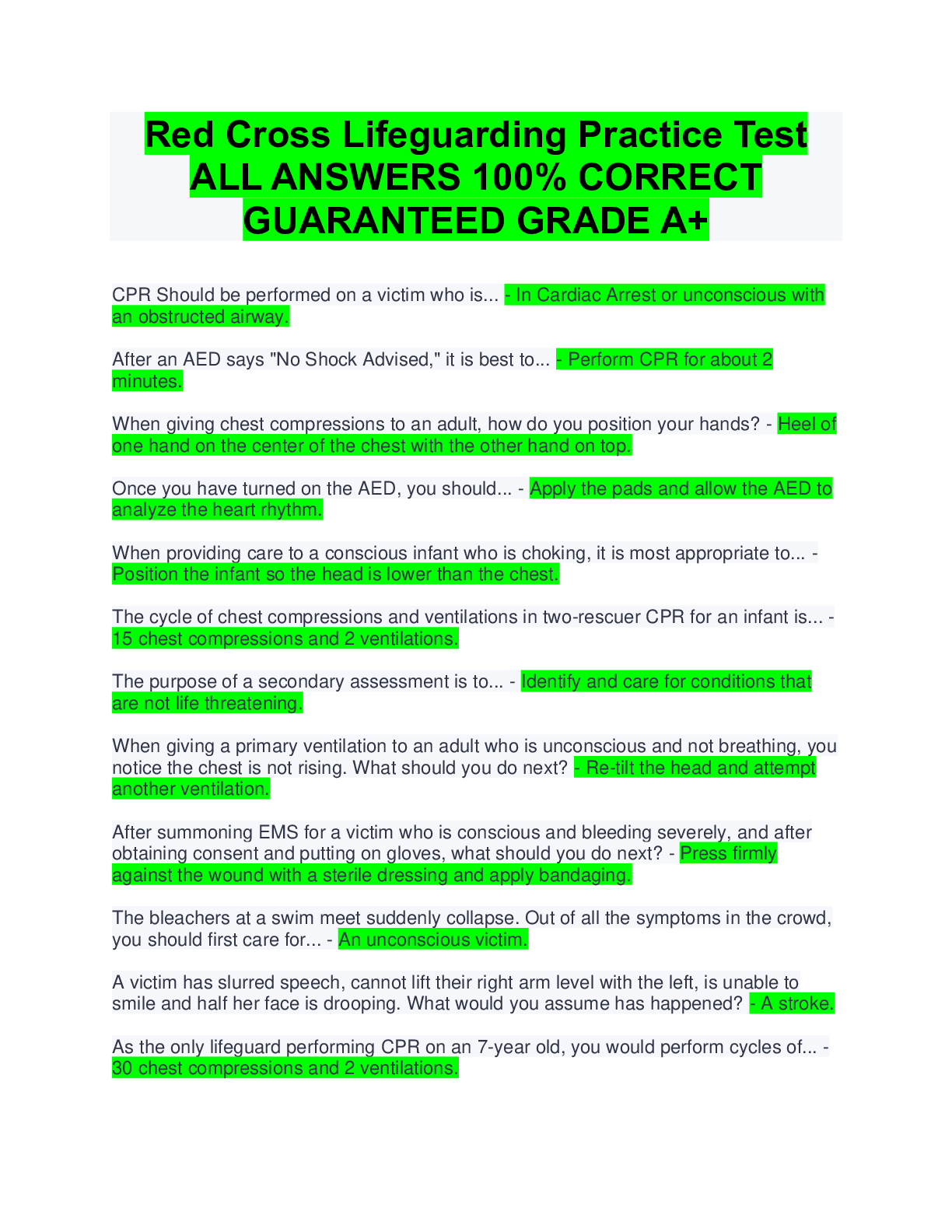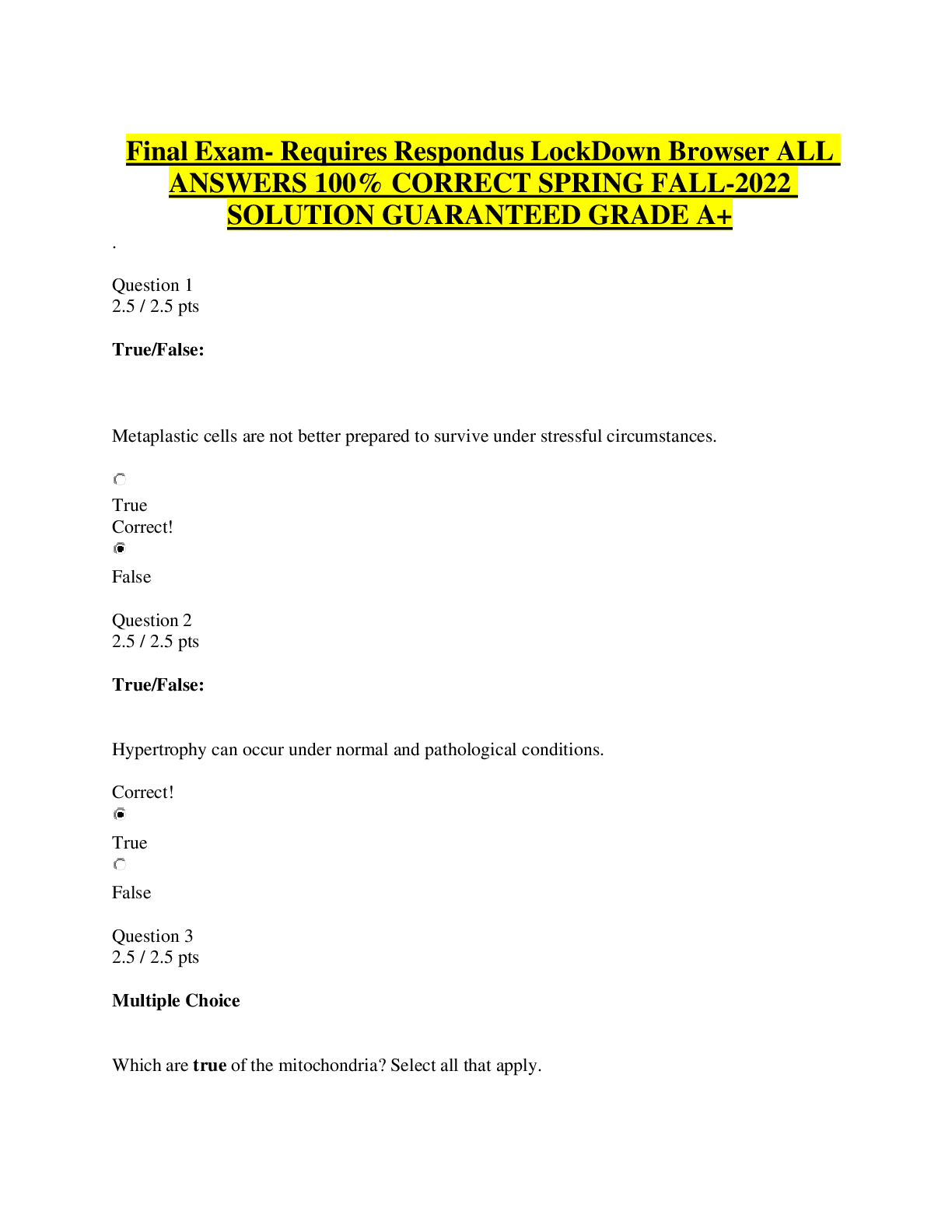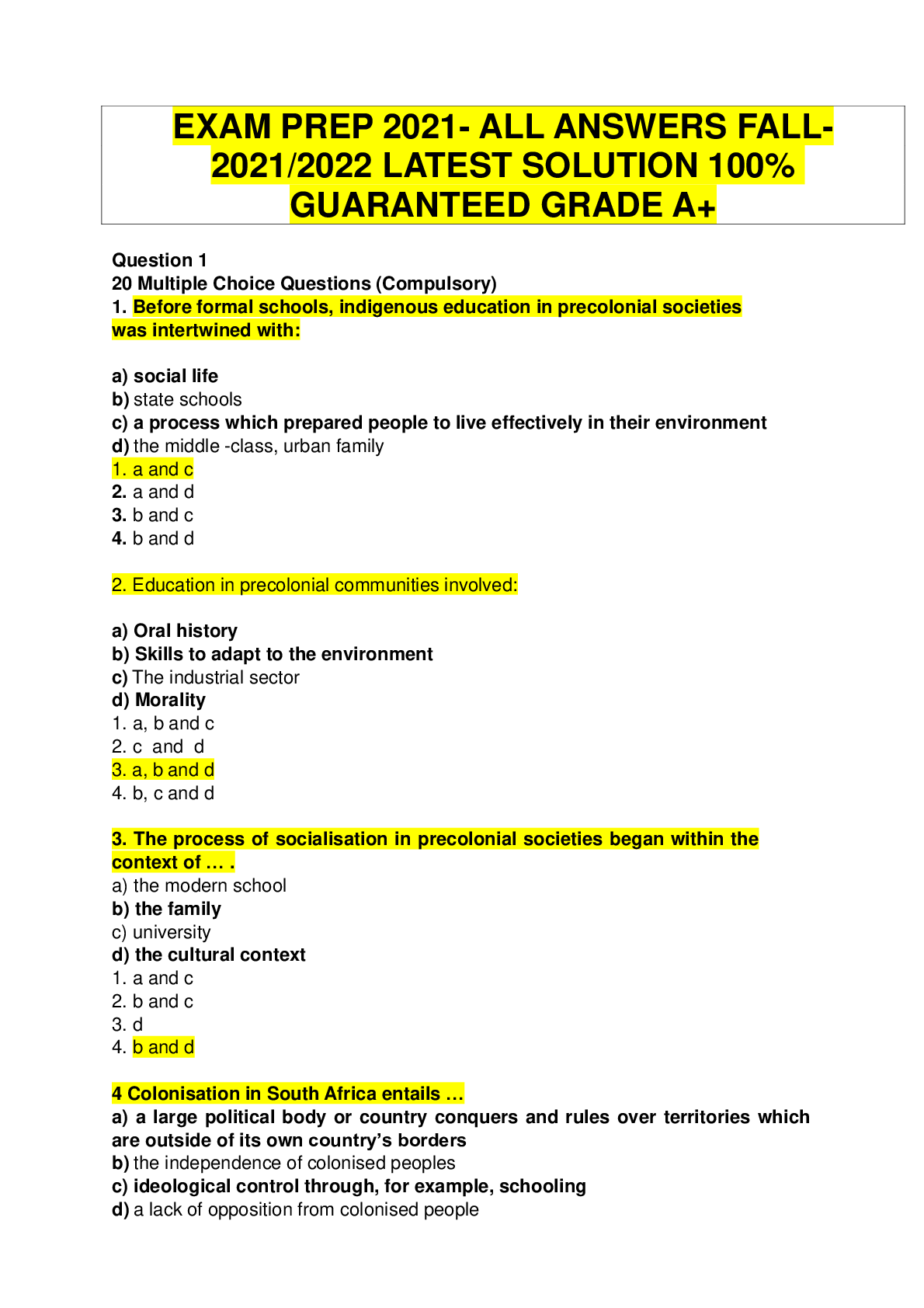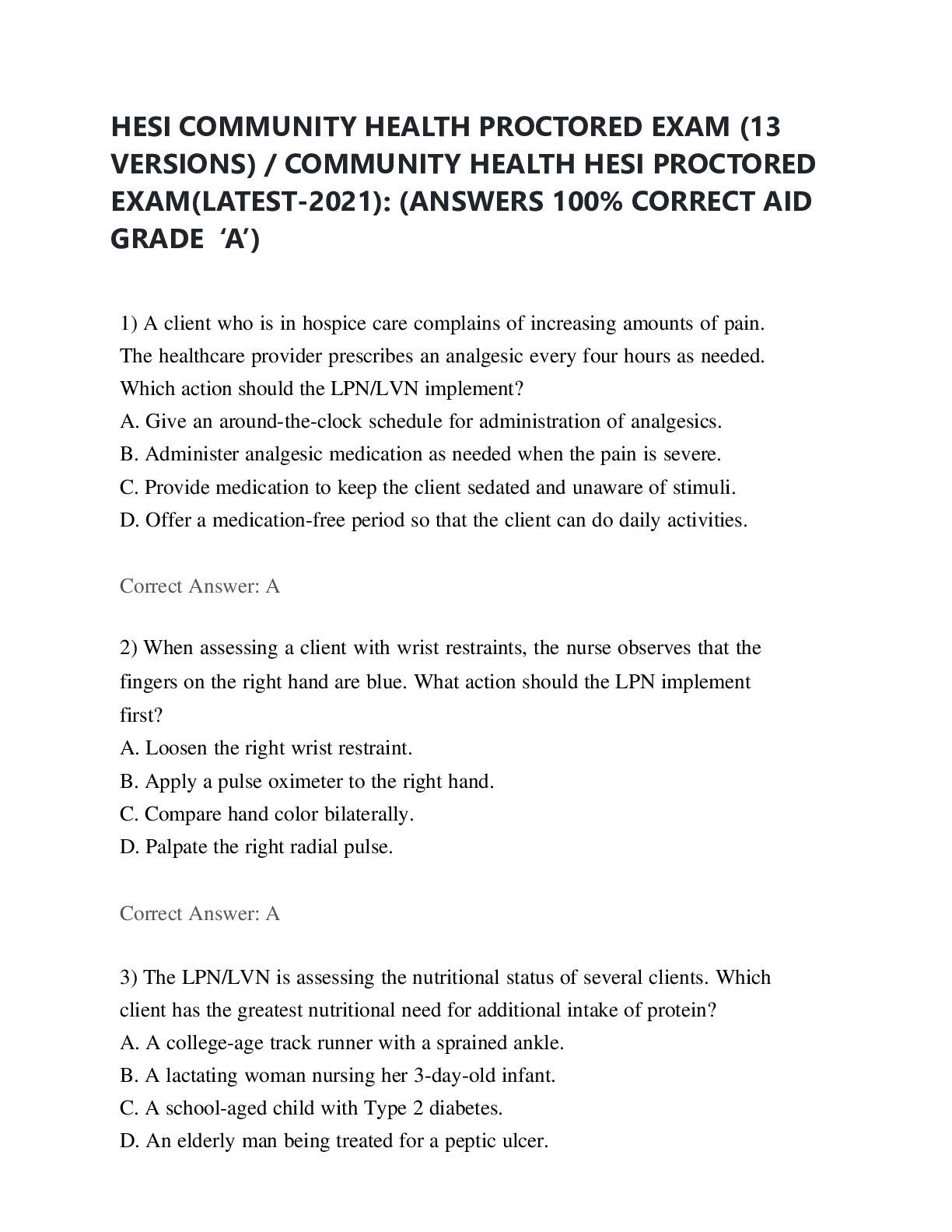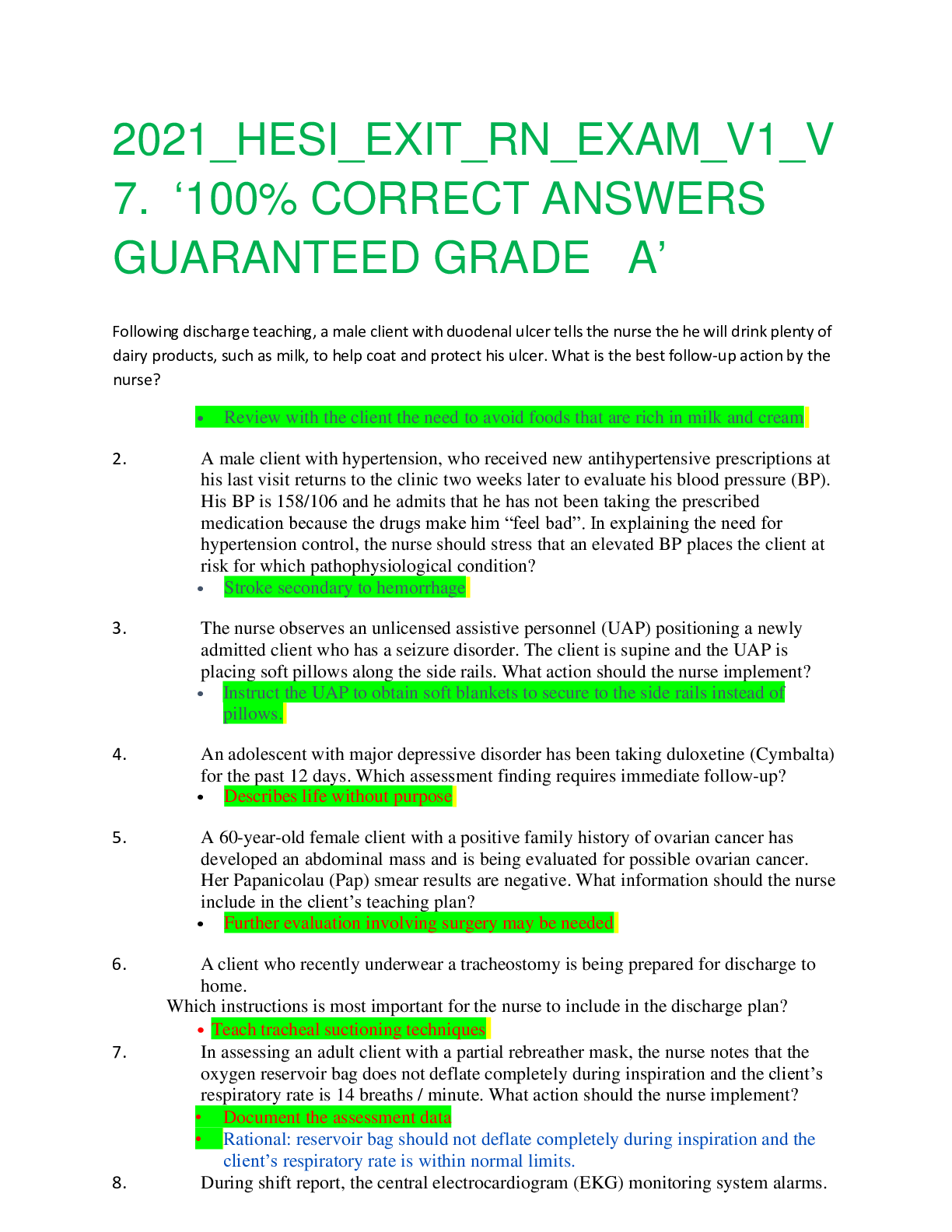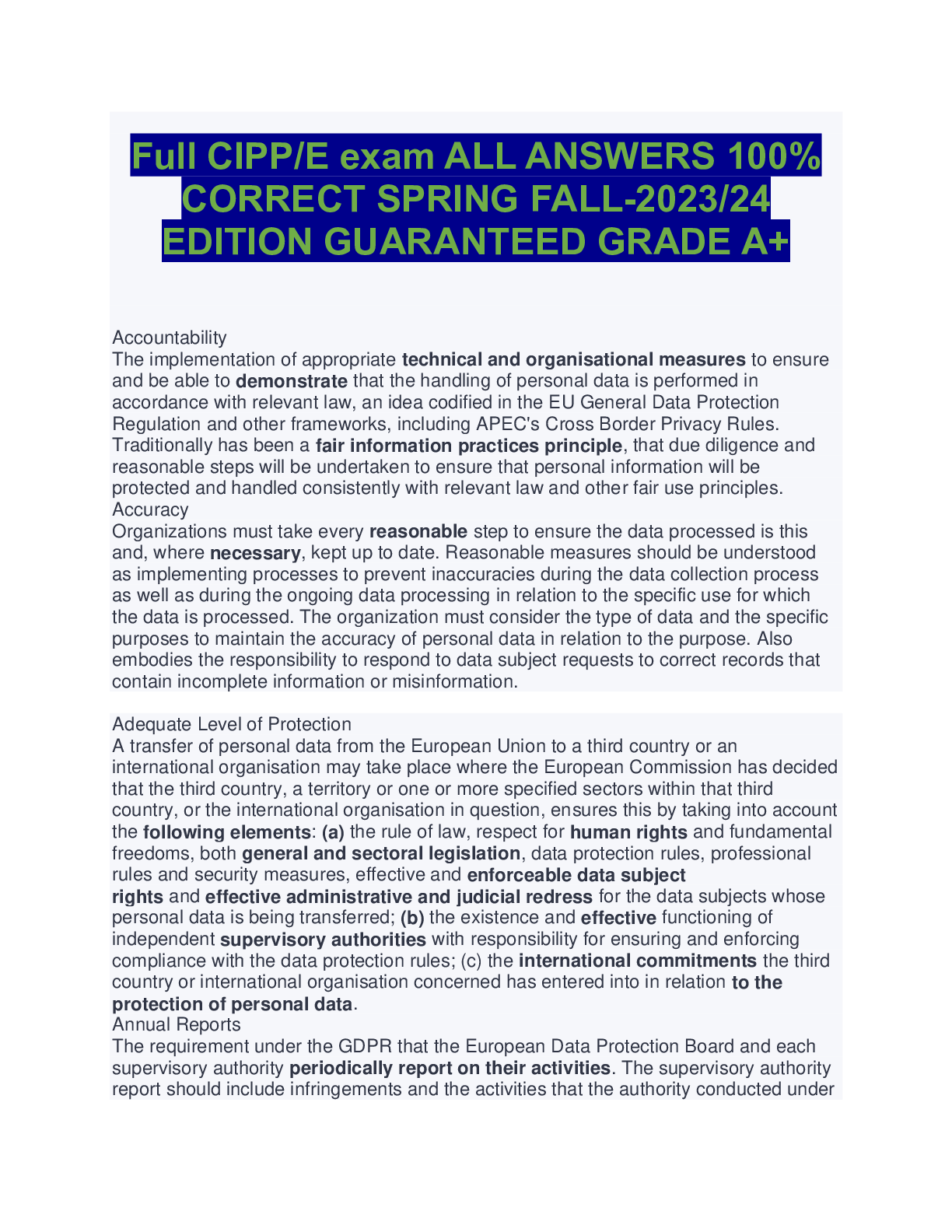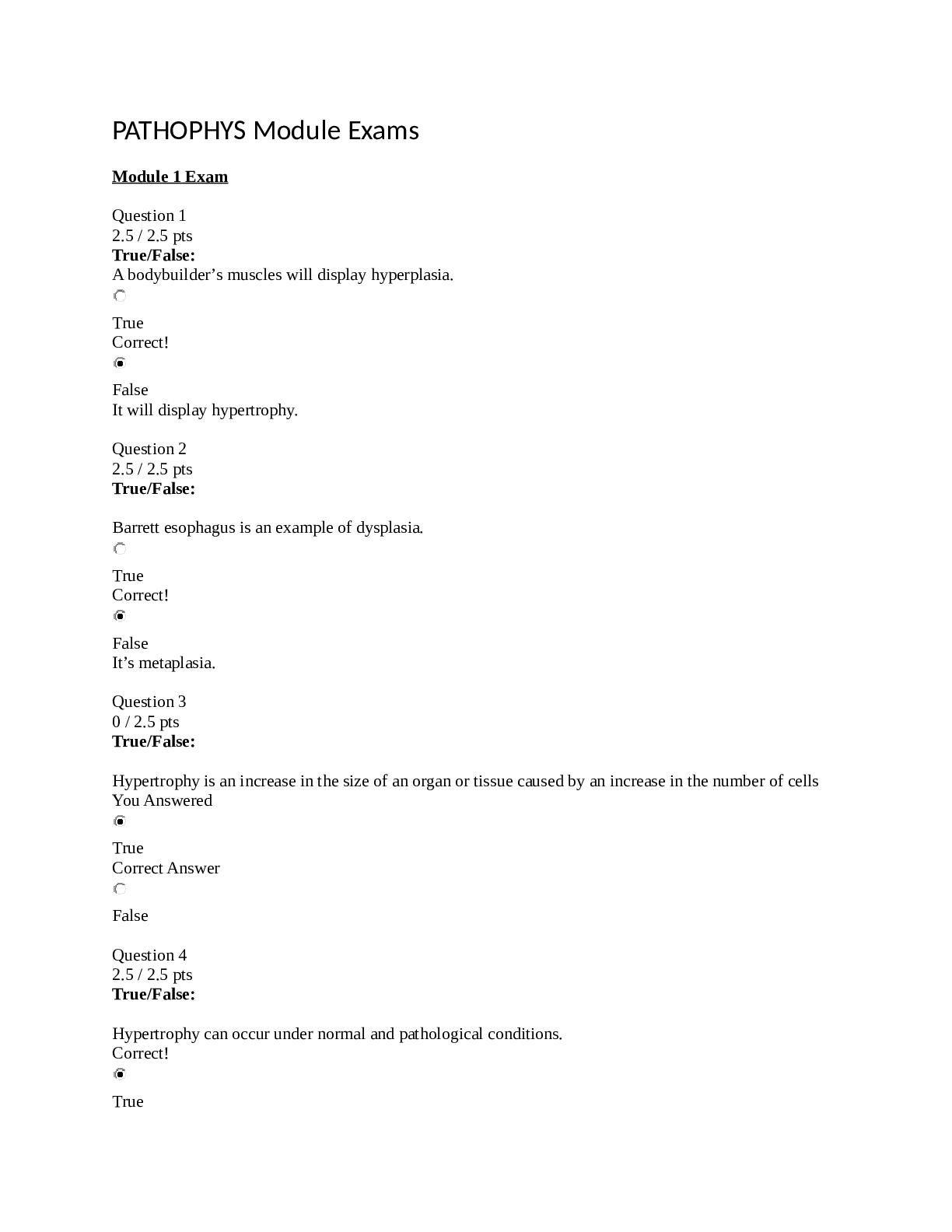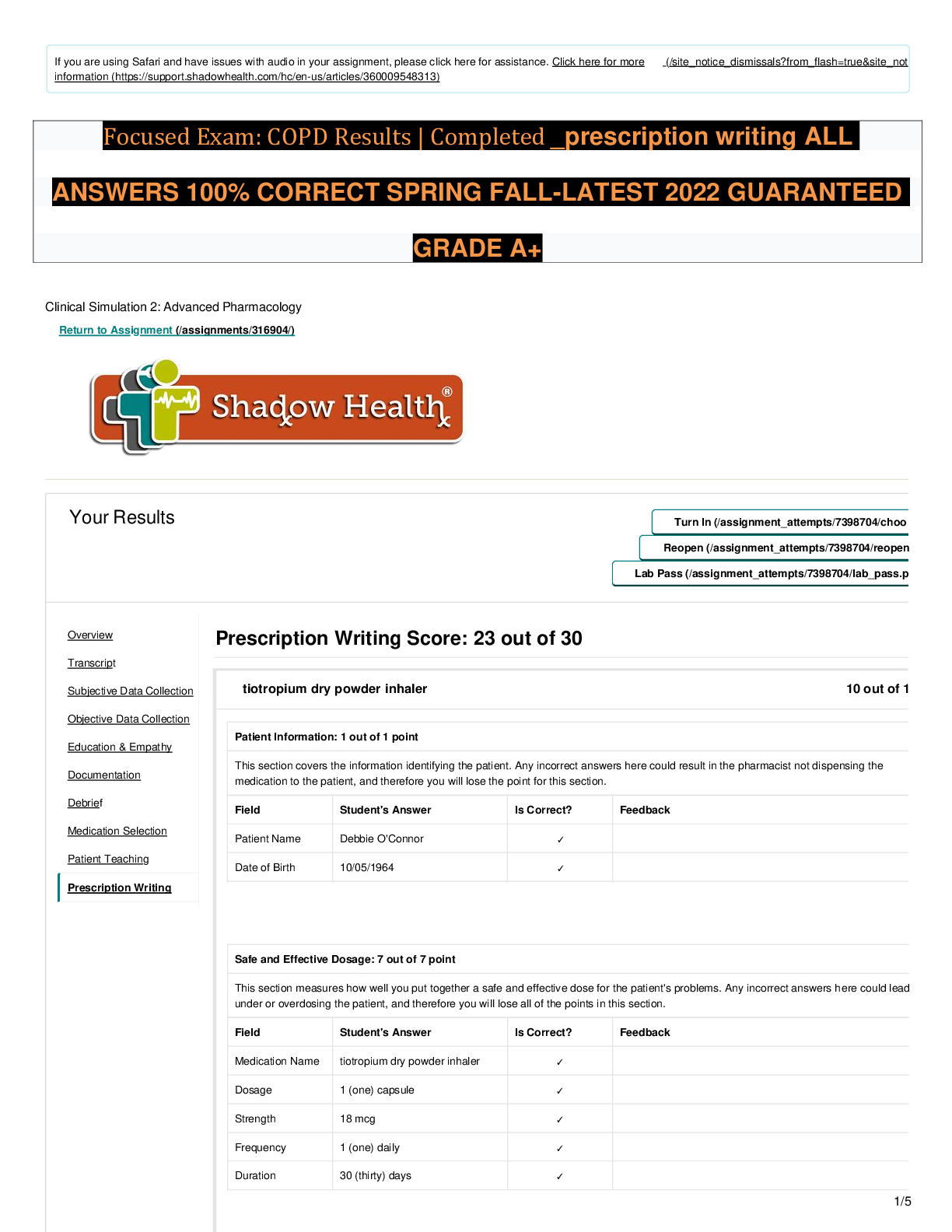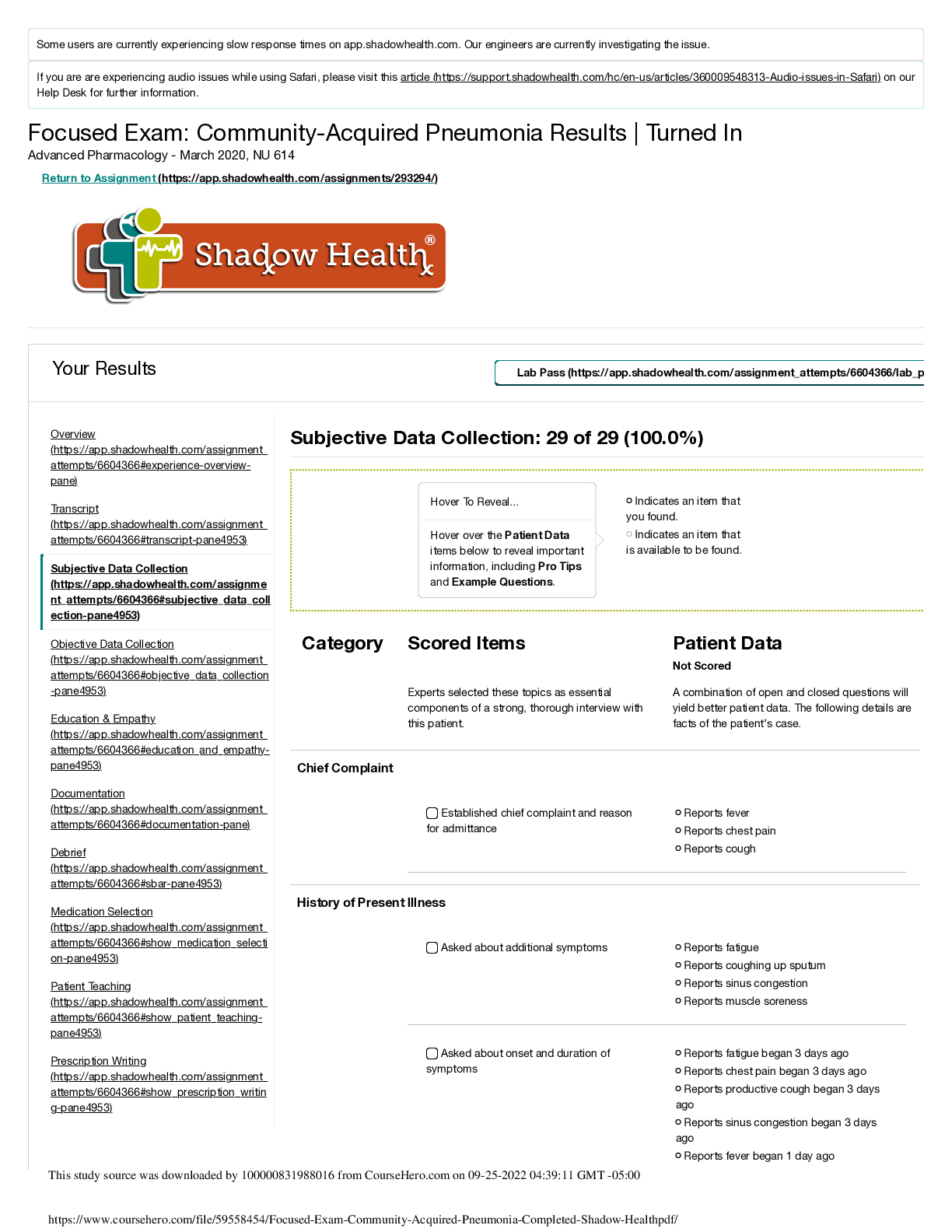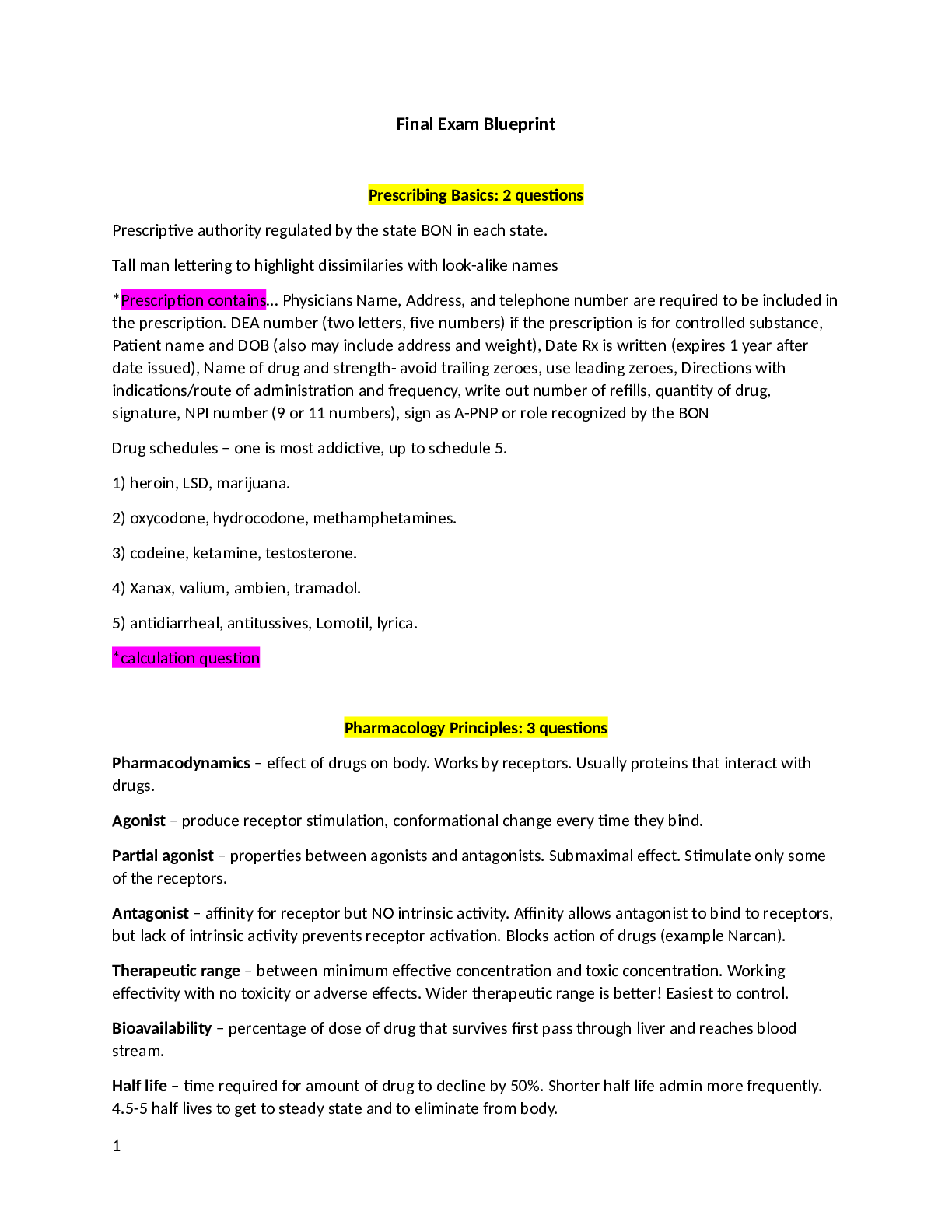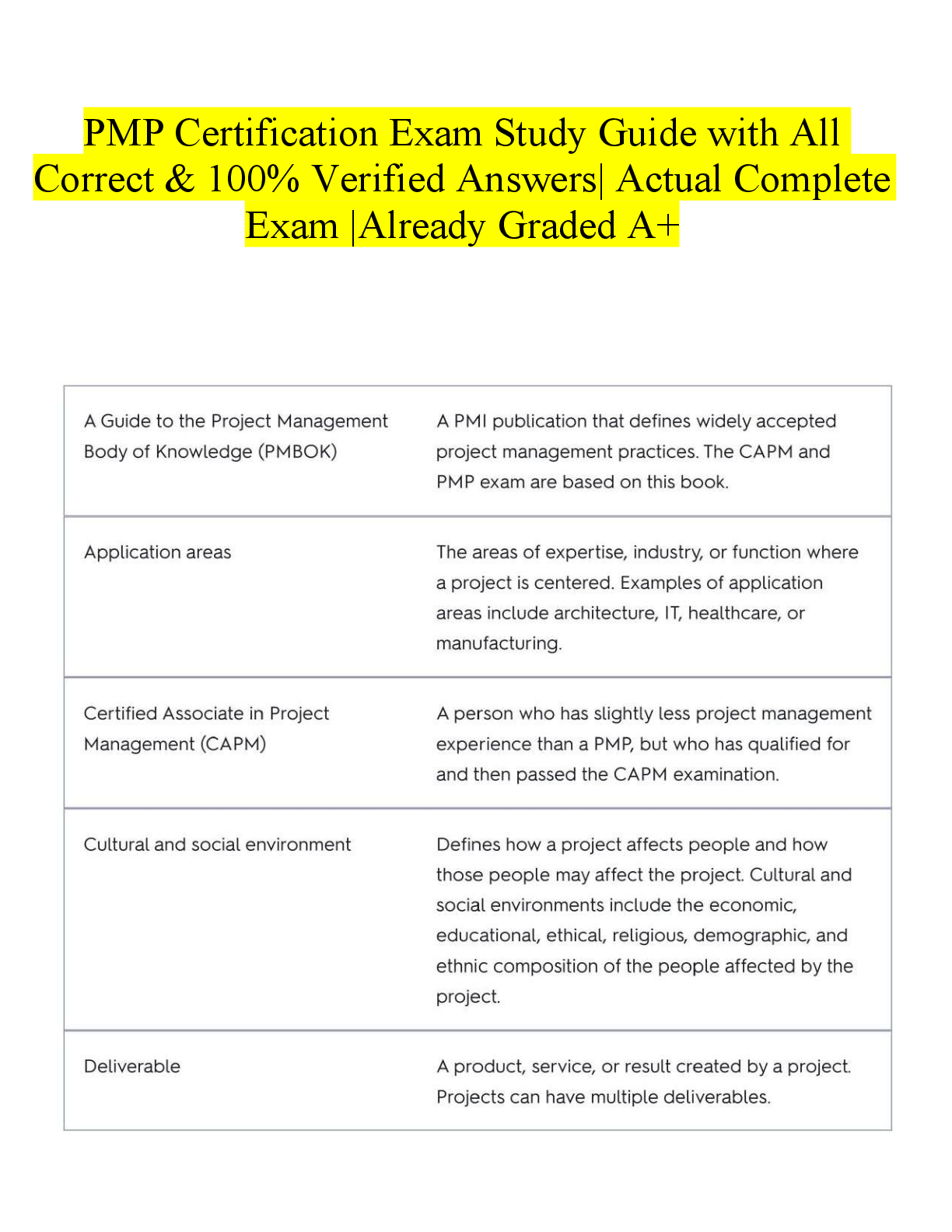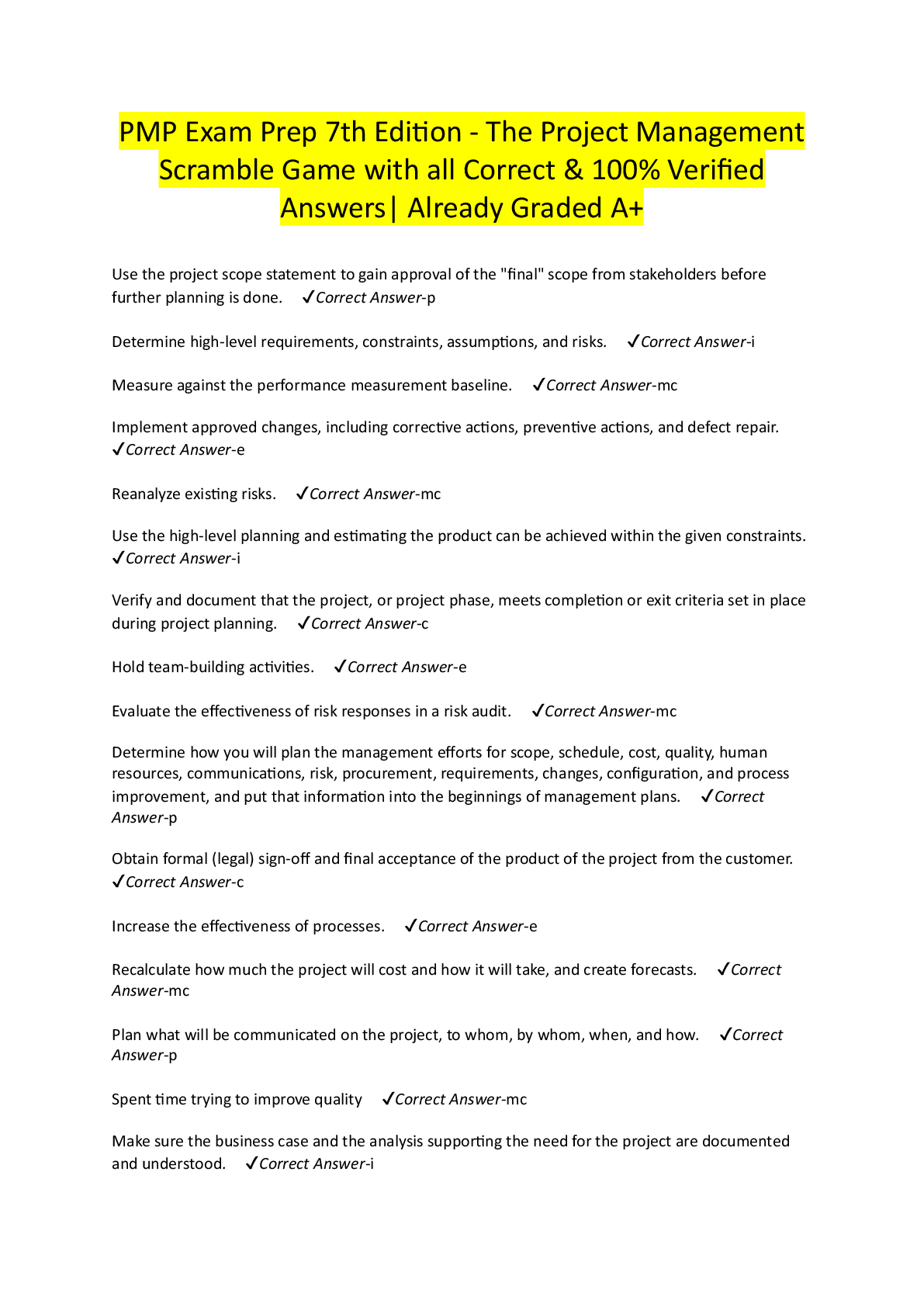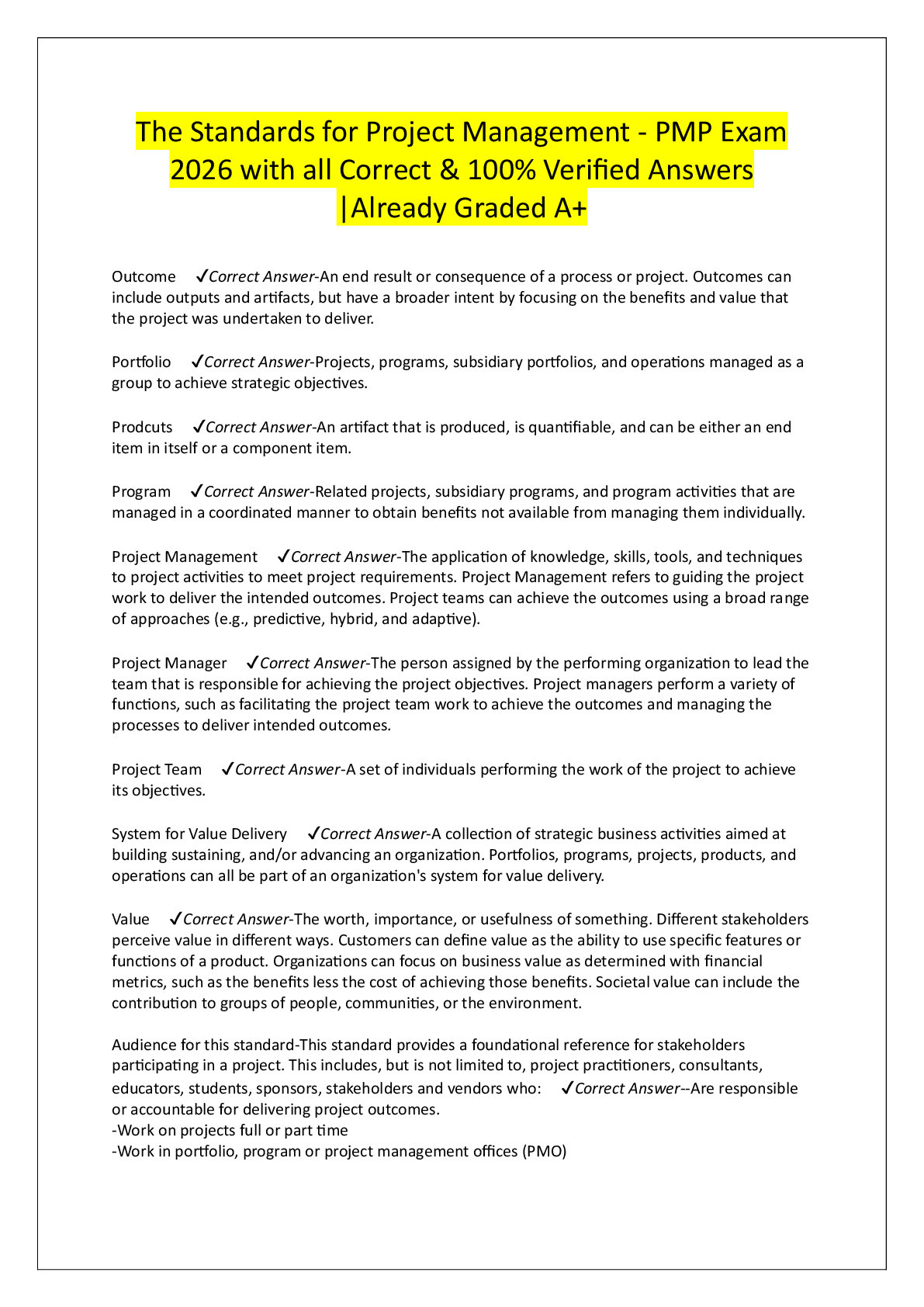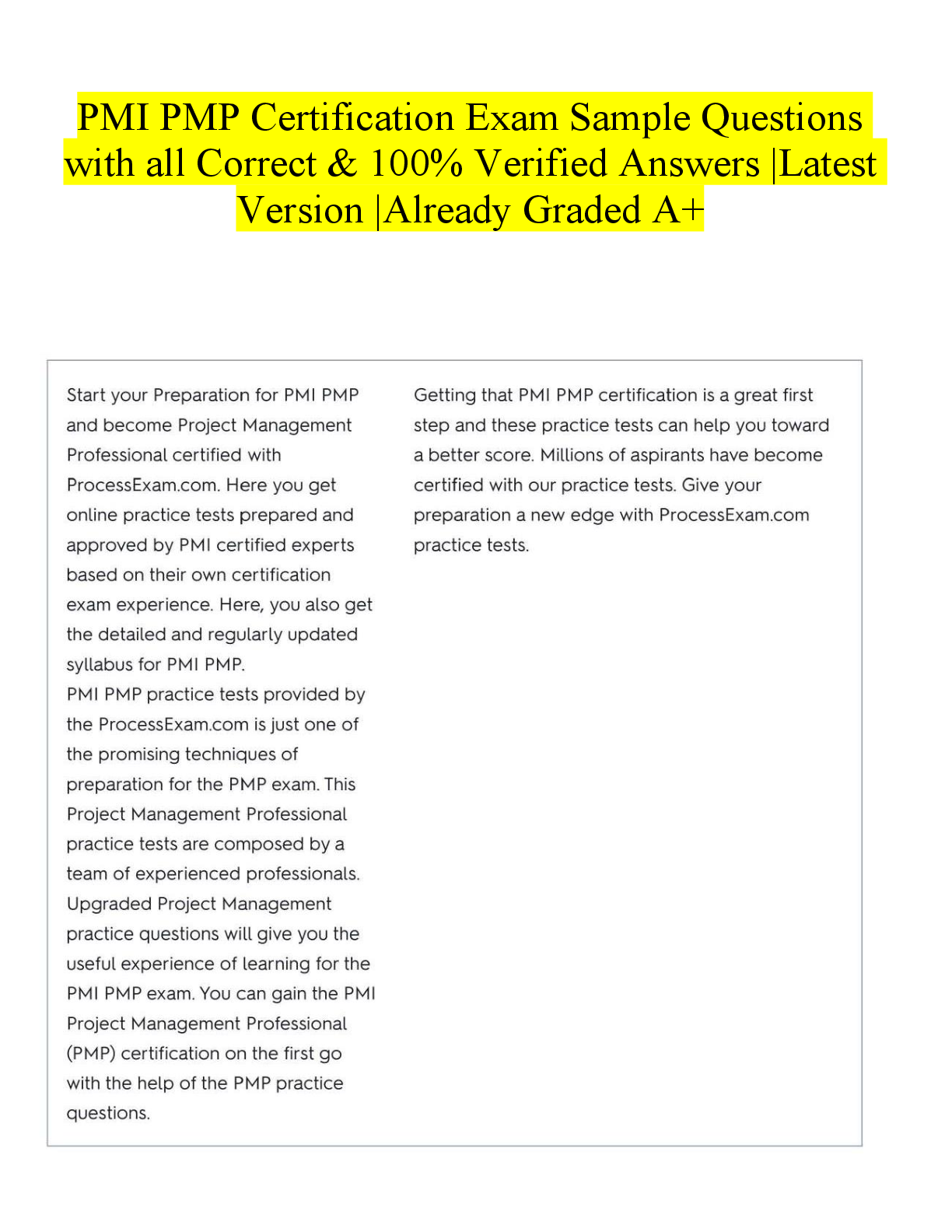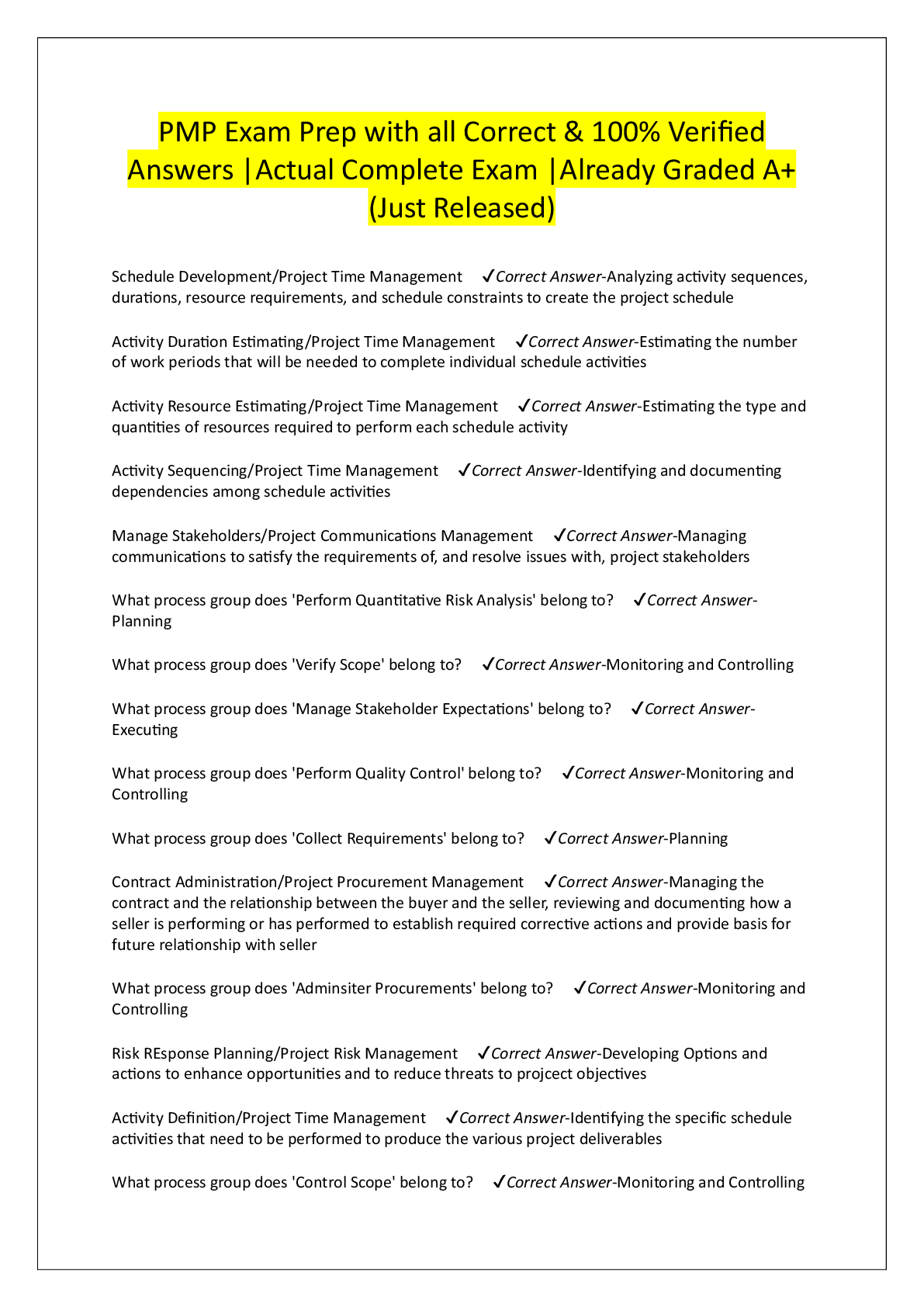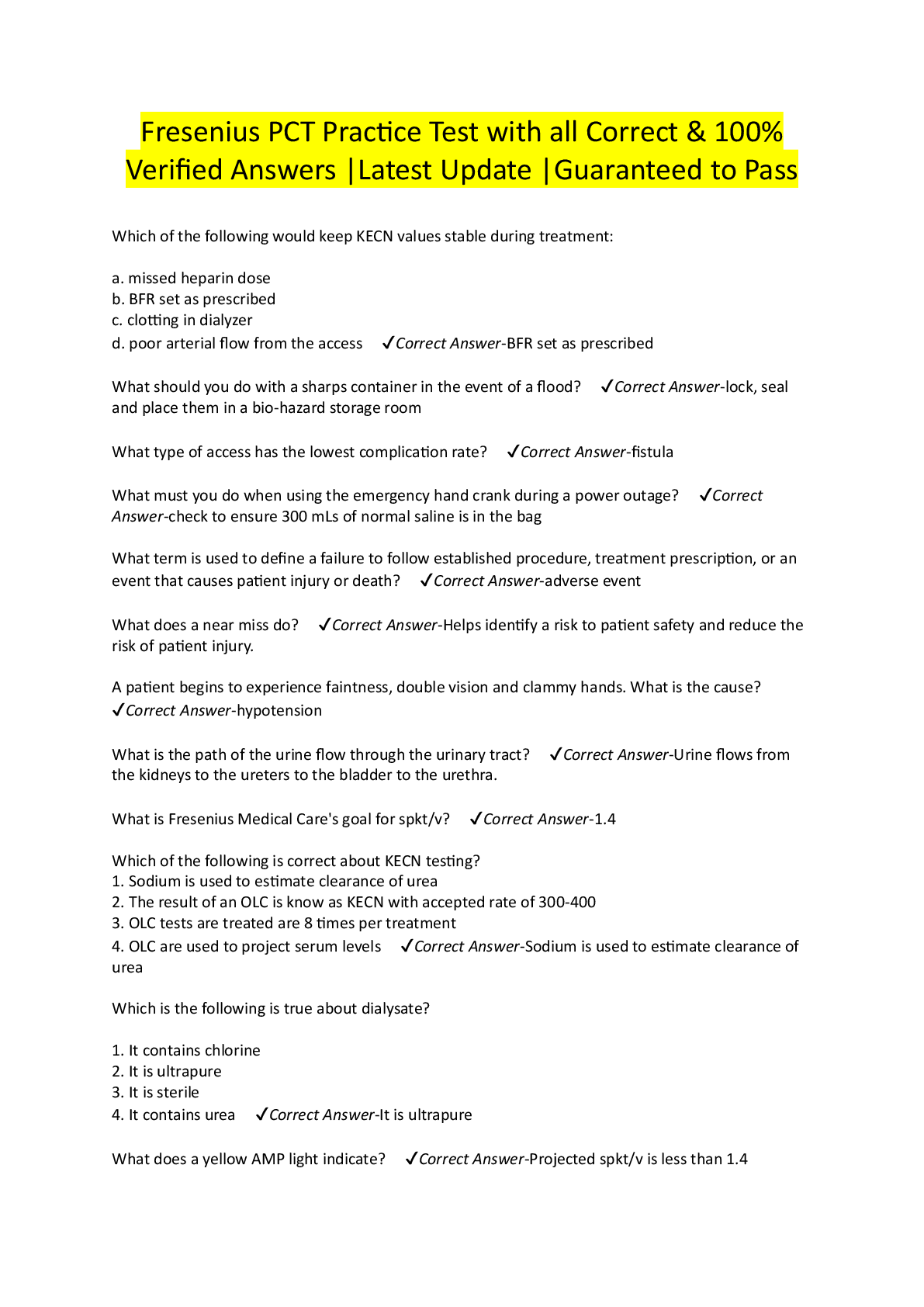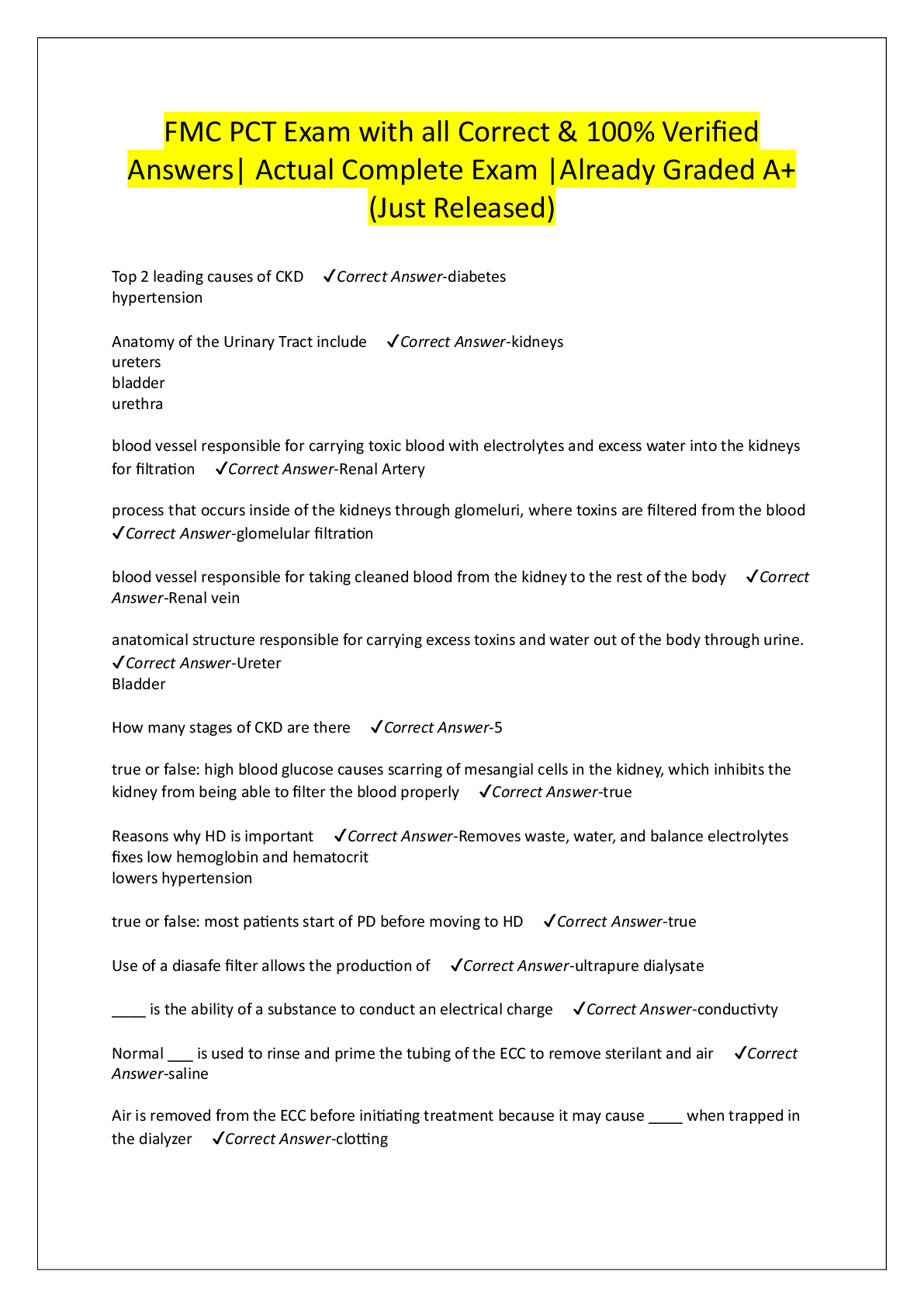Business Administration > EXAM > Test Bank for Principles of Human Physiology 5th Edition By Stanfield ALL ANSWERS SOLUTION 100% CORR (All)
Test Bank for Principles of Human Physiology 5th Edition By Stanfield ALL ANSWERS SOLUTION 100% CORRECT GURANTEE GRADE A+
Document Content and Description Below
1) The smallest living units capable of carrying out their own basic life functions are called A) cells. B) organelles. C) organs. D) organ systems. E) tissues. Answer: A 2) Cells are classifie ... d into which of the following four broad categories? A) squamous, cubodial, columnar, and basement membranes B) endocrine, nervous, integumentary, and reproductive C) atoms, tissues, organs, and organ systems D) neurons, muscle, epithelial, and connective tissue E) skeletal, cardiac, endocrine, and nervous Answer: D 3) Epithelial cells are associated with a noncellular material called a(n) A) muscle fiber. B) endocrine gland. C) basement membrane. D) connective tissue. E) fibroblast. Answer: C 4) are found in the linings of hollow organs where they separate fluids in the interior cavity from the surrounding body fluids. The interior cavity of a hollow organ or vessel is known as a . A) Epithelial : lumen B) Endocrine cells : lumen C) Elastin cells : cavity D) Smooth muscle cells : cavity E) Connective tissues : basement membrane Answer: A 5) The tissue type that generates mechanical force and movement, and whose activity is controlled both on a voluntary and involuntary level, is tissue. A) nervous B) epithelial Answer: D 6) Glands are derived from what type of tissue? C) skeletal D) muscle E) connective A) connective B) reticular Answer: E C) nerve D) muscle E) epithelial 7) The cell types blood, bone, fat, and lymph would be categorized into which of the following major cell classes? A) muscle cells B) epithelial cells C) endocrine cells D) neurons E) connective tissue cells Answer: E 8) Which tissue type includes cells contained in an extracellular matrix composed of collagen and elastin? A) muscle tissue B) nervous tissue C) endocrine tissue D) epithelial tissue E) connective tissue Answer: E 9) What is a general name for the noncellular material that holds the widely scattered cells of connective tissue together? A) intracellular matrix B) extracellular matrix C) basement membrane D) elastin E) collagen Answer: B 10) Which of the following is a protein found in connective tissue that provides the tensile strength to resist stretching? A) erythropoietin B) elastin C) vimentin D) collagen E) basement membrane Answer: D 11) What are the structures that attach bone to muscle? A) aponeuroses B) intracellular matrix proteins C) ligaments D) extracellular matrix proteins E) tendons Answer: E 12) Organs of the body are defined as A) a collection of cells that function independently of one another. B) a collection of cells that perform similar functions. C) a collection of tissues that function independently of one another. D) two or more tissues combined to form a structure that allows each tissue to function independently. E) a combination of two or more tissues that make up a structure which performs a specific function. Answer: E 13) Which of the following accurately represents the order of complexity for the components of the body, from least to most complex? A) cells, tissues, organ systems, organs B) cells, tissues, organs, organ systems C) organ systems, organs, tissues, cells D) tissues, cells, organs, organ systems E) organ systems, cells, tissues, organs Answer: B 14) The uptake of nutrients across the epithelial cells of the gastrointestinal tract and into the bloodstream is called A) secretion. B) filtration. C) reabsorption. D) absorption. E) excretion. Answer: D 15) What organ system includes the pituitary gland, adrenal gland, and thyroid gland? A) nervous B) immune C) endocrine D) integumentary E) cardiovascular Answer: C 16) The lumen of which of the following systems is part of the internal environment? A) respiratory system B) gastrointestinal system C) urinary system D) cardiovascular system E) gastrointestinal and urinary systems Answer: D 17) The process whereby fluid from the bloodstream enters the tubules of the kidneys is called A) excretion. B) absorption. C) filtration. D) secretion. E) reabsorption. Answer: C 18) The process whereby fluid in the kidneys is transported from the tubules back into the bloodstream is called A) absorption. B) reabsorption. C) secretion. D) excretion. E) filtration. Answer: B 19) Referring to a membrane as "selectively permeable" describes its ability to A) allow the movement of particular molecules across a membrane. B) restrict only the movement of sodium across a membrane. C) restrict only the movement of potassium across the membrane. D) provide a barrier that restricts the movement of all molecules across a membrane. E) provide a minimal barrier that allows almost any molecule to move across a membrane. Answer: A 20) Extracellular fluid is composed of A) plasma and intracellular fluid. B) intracellular fluid only. C) interstitial fluid and plasma. D) plasma only. E) interstitial fluid only. Answer: C [Show More]
Last updated: 3 years ago
Preview 1 out of 17 pages

Buy this document to get the full access instantly
Instant Download Access after purchase
Buy NowInstant download
We Accept:

Reviews( 0 )
$12.00
Can't find what you want? Try our AI powered Search
Document information
Connected school, study & course
About the document
Uploaded On
Sep 30, 2021
Number of pages
17
Written in
All
Additional information
This document has been written for:
Uploaded
Sep 30, 2021
Downloads
0
Views
129

